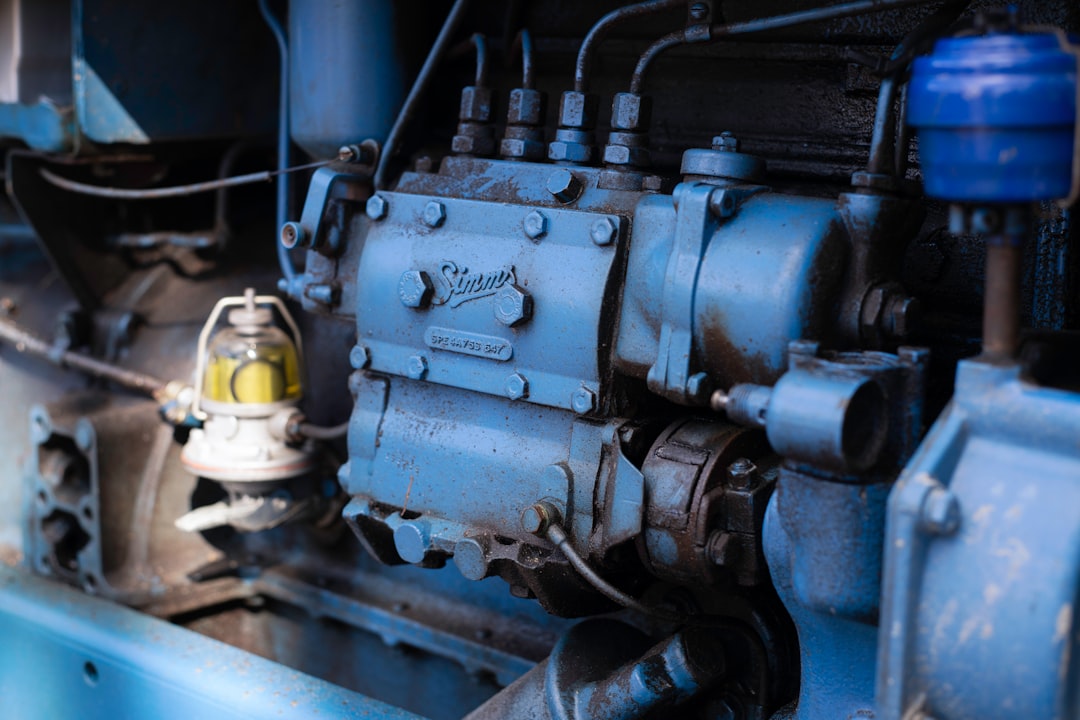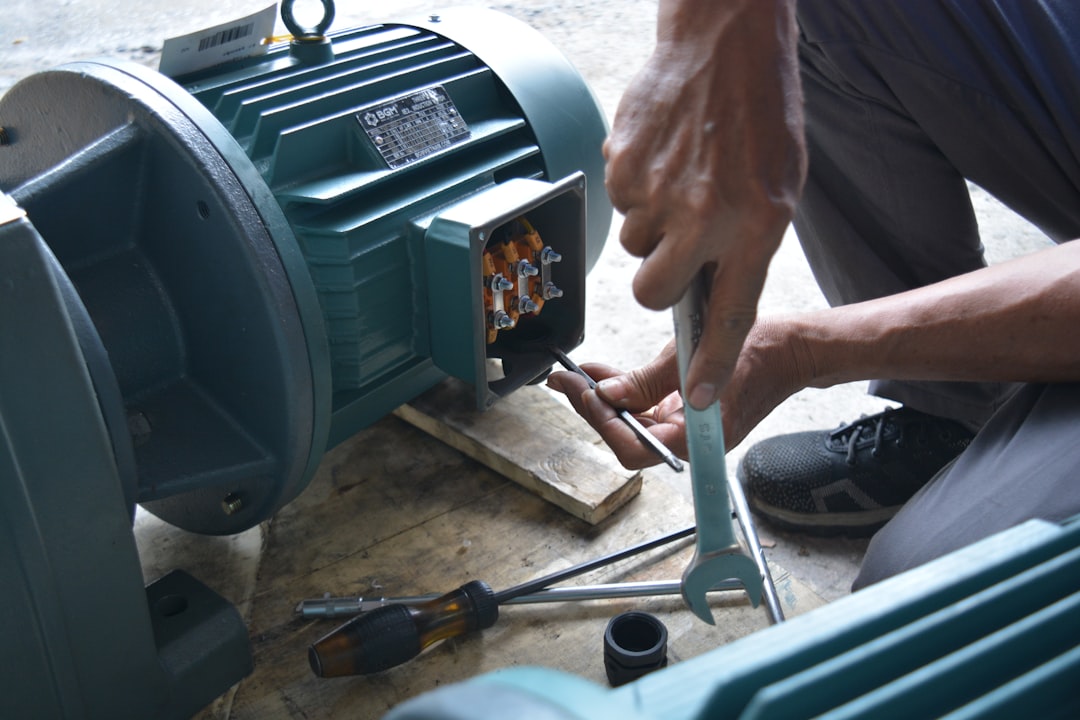

Engage prospects with a scan and streamline customer engagement with FREE QR code marketing tools by Sona – no strings attached!
Create a Free QR CodeFree consultation

No commitment

Engage prospects with a scan and streamline customer engagement with FREE QR code marketing tools by Sona – no strings attached!
Create a Free QR CodeFree consultation

No commitment
QR codes have rapidly become a strategic tool for bridging offline engagement with online action. For compressor repair services businesses, they offer a frictionless and highly effective way to streamline customer support, accelerate service intake, and centralize service information without requiring complex setup or app downloads. Used thoughtfully, QR codes can turn every compressor, invoice, and service van into a gateway for action that speeds up assistance and captures demand in real time, on platforms like Sona QR.
Compressor repair and maintenance often rely on a mix of offline diagnostics, on-site visits, and digital recordkeeping, which can result in disjointed experiences and missed opportunities for both providers and customers. Key details about equipment ownership or prior repairs may be lost, and valuable prospects can slip away if their interest is not digitally captured at the first touchpoint. These gaps in service follow-up and slow outreach provide competitors with an edge and can extend downtime for customers.
Deploying QR code driven workflows enables compressor repair service providers to bridge the physical to digital divide, deliver instant access to support, digitize the intake process, and capture valuable engagement data that fuels more responsive and customer centric operations. Modern platforms also help identify interest before a formal service request, preventing the loss of high value opportunities that typically remain invisible. With the right setup, QR codes can shorten response times, reduce errors, and improve customer satisfaction while creating a measurable pipeline for growth.

QR codes bridge the gap between physical touchpoints and digital outcomes, making it easier to boost responsiveness, accelerate emergency repair intake, and support efficient compressor maintenance scheduling. When a customer or technician can scan a code and instantly reach the right form, content, or contact, the path from problem to solution becomes much shorter and far more consistent, as shown in Sona QR HVAC guide.
To replace outdated analog steps, identify where your process depends on paper or manual follow up. Paper intake forms can become mobile forms, printed triage checklists can become interactive troubleshooting trees, voicemail based scheduling can become automated booking flows, and loosely filed maintenance logs can become structured, time stamped records linked to each asset. The result is fewer missed details, faster routing, and complete visibility across the customer journey.
Here is how to do it effectively:
Replacing paper intake forms with QR enabled entry ensures that no inquiry goes undocumented and that data is immediately actionable. It also minimizes the lag between a customer need and your business’s response, which is essential during emergency failures when every minute translates to real cost. With dynamic codes, you can keep destinations fresh without reprinting labels or signage as your processes evolve.

Compressor repair services face unique operational and marketing challenges that QR codes are well suited to solve. Equipment failures do not wait for office hours, diagnostic information is often scattered, and the people encountering problems are frequently in the field with limited access to computers. A simple scan makes help available in seconds and connects offline activity to measurable outcomes. See HVAC QR codes for industry examples.
QR codes also enable providers to understand and serve demand that was previously invisible. A plant operator scanning a code on a maintenance tag to check oil specs, a contractor scanning a van decal to request an after hours repair, or a financial controller scanning an invoice to approve a quote, each creates a digital touchpoint that can be tracked, segmented, and followed up with automatically.
Use QR codes on appointment cards to enable touch to calendar booking, on equipment labels to access manuals and service history, and on flyers or direct mailers to turn outreach into measurable demand generation. Each placement makes the experience easier for customers while bringing transparency to previously untrackable interactions.

QR codes can fulfill a range of business needs in compressor repair, from triage and scheduling to parts ordering and relationship building. Selecting the right format and destination ensures the scan leads directly to the action you want the user to take, which improves completion rates and reduces confusion.
For most providers, dynamic web links and prefilled intake forms deliver the highest value since they combine low friction engagement with robust analytics. That said, other formats such as vCards or Wi Fi access can remove frequent daily obstacles and contribute to a more professional, efficient service experience.
For compressor repair services, prioritize dynamic web links and forms for intake, triage, and scheduling, vCards for emergency access, and SMS or email for rapid communication that captures context without forms. Use static codes for evergreen content like general safety posters and dynamic codes for anything you expect to optimize or update.

In compressor repair services, the most impactful QR code placements are on physical media already in the field. By aligning codes with real world behaviors, you can make action easy at the exact moment need arises, which improves response times and increases conversion rates across your funnel.
Focus on surfaces that get consistent attention, that travel to customer sites, or that accompany transactions and service milestones. Assign a unique, trackable code to each placement so you can measure performance and refine messaging or destinations over time.
These touchpoints empower technicians and clients to connect offline scenarios with digital solutions and drive measurable increases in engagement. As scan data accumulates, you can prioritize future placements where you see the strongest response.

Every use case should connect a real world trigger to a digital action that reduces friction and creates value. By mapping the most common customer interactions to QR enabled workflows, you streamline operations and capture demand that previously relied on manual steps or memory. For industry tech, see HVAC QR tracking.
Choose a few high impact workflows first, then expand across your customer lifecycle. Make sure each destination is optimized for mobile and includes clear next steps to guide the user toward resolution.
Each workflow turns anonymous or delayed interactions into actionable real time insights that drive customer satisfaction and revenue. Over time, you will accumulate a dataset that indicates which assets, sites, or industries within your customer base display the greatest service needs, enabling proactive outreach and inventory planning.
Each QR code scan is a signal that captures intent, context, and behavior. By deploying multiple QR codes across touchpoints, you can segment your audience automatically and use that data to fuel precise retargeting and follow up campaigns. This transforms a one time scan into an ongoing dialogue guided by customer needs.
Create a taxonomy that distinguishes scanners by intent and context. For compressor repair services, you might separate planned maintenance interest from emergency repair demand, facilities teams from finance approvers, and OEM part seekers from budget oriented buyers. With clear segments, your follow up becomes relevant and timely.
With the right system, each QR code becomes a smart entry point into your funnel, capturing data that helps you retarget based on real behavior, not assumptions. In this industry, useful distinctions include facility managers versus homeowners, emergency incidents versus planned maintenance, contract customers versus one time service buyers, and corporate locations versus field sites. Align your response by segment to improve conversion and satisfaction.
QR codes are more than convenient links. They act as connectors across your offline and digital campaigns, enabling real time engagement and richer data collection in every channel. When each piece of collateral becomes scannable, you close the loop between exposure and measurable action.
To maximize impact, treat QR codes as persistent entry points into your customer journeys. Assign each placement a purpose, such as education, scheduling, or conversion, and measure how it contributes to pipeline and revenue. Use a centralized platform to manage codes, update destinations, and unify data for attribution and optimization.
QR codes serve as the offline on ramp to your digital marketing engine. They also unlock a new layer of data collection across channels that were once difficult to measure. With a centralized platform such as Sona QR, you can manage all your codes, monitor performance, and sync scan data with your CRM and ad platforms to create a single view of engagement.
Getting started is straightforward when you follow a structured approach. Treat QR deployments like any marketing or operations initiative with clear goals, thoughtful design, and rigorous measurement. Start small with a few high value placements, then expand as you learn what drives the strongest results.
Below is a practical checklist tailored to compressor repair services. Each step helps you move from idea to outcomes while avoiding common pitfalls such as unclear calls to action or untracked scans.
Focus on one business outcome per code. For compressor repair services, common goals include Book a Repair, Order a Part, Download a Manual, or Approve a Quote. When each scan leads to a specific, useful action, completion rates rise and data quality improves.
Map your use case to a physical placement where the intent naturally exists. A Book a Repair code belongs on equipment labels and maintenance boards, while an Approve a Quote code fits on invoices or email PDFs. Keep destinations mobile first, reduce form fields, and prefill what you can with asset or site parameters to minimize friction.
Choose static codes for unchanging, evergreen content such as a general safety page or a standalone PDF. Static is simple and reliable when tracking is not a priority and you do not expect content updates.
Use dynamic codes for anything tied to campaigns, attribution, or future optimization. Dynamic codes let you update destinations without reprinting and capture scan metadata for analytics, segmentation, and retargeting. In compressor repair, dynamic is ideal for service intake forms, promotions, maintenance booking, and any placement where you want to attribute revenue to scans. Start creating QR codes for free.
Design for visibility and clarity. Add your logo and brand colors, include a short benefit driven call to action such as Scan for Fast Repair, and provide brief instructions for unfamiliar users. Keep sufficient white space around the code, use high contrast colors, and avoid glossy surfaces that cause glare.
Test scans on multiple devices and under real conditions. Try different angles, distances, and lighting scenarios found in plants, mechanical rooms, and outdoor sites. Print at a size appropriate for the viewing distance, and validate that forms and pages load quickly on cellular connections. If a placement might get dirty or oily, use durable labels or protective covers and position the code on a clean, accessible panel.
Start with high impact placements such as equipment labels, van decals, invoices, job checklists, and trade publication ads. Assign unique codes by asset, site, or channel so you can compare performance across contexts. Keep a simple registry that lists where each code lives, the destination URL, and the owner responsible for updates.
Match placement to audience behavior and scanning context. For example, on equipment panels, send scanners to quick troubleshooting first, then offer a link to request service. On invoices, prioritize approval or scheduling. In direct mail, emphasize a clear offer like Free 20 Point Inspection with Scan and make the landing page specific to the region or industry segment.
Use analytics to monitor scan activity by time, location, and device. Measure conversion behavior and drop off points to identify friction in your forms or content. A or B test landing page headlines, calls to action, and destinations to improve outcomes over time.
Integrate with your CRM to enrich contacts with scan events and trigger workflows automatically. For instance, create alerts for emergency scans, add points to lead scores for maintenance content engagement, and segment audiences based on scan context. Review results monthly and update destinations and placements based on performance. With a system like Sona QR, much of this can be automated and viewed in a single dashboard.
A disciplined process makes QR a reliable channel rather than a novelty. As your team gains confidence, introduce advanced tactics such as personalized destinations by customer tier, offer variants by region, and asset level analytics that inform proactive maintenance sales.
Closing the loop is essential. Knowing someone scanned a code is useful, but without account level insight and connected attribution, follow up becomes incomplete and outreach feels impersonal. To drive performance, you need to connect scans to sessions, form fills, conversations, and revenue.
Treat scan data as a first class signal in your performance stack. Combine it with website analytics, ad clicks, email engagement, and CRM activity to build a comprehensive view of the buyer journey. When you can see that a compressor label scan led to a maintenance booking that preceded a service contract upsell, budget decisions become clearer and more defensible.
For compressor repair services, useful benchmarks include scan to form conversion rate, form completion rate, average time from scan to scheduled appointment, and revenue per unique scanner. Also monitor repeat scans per asset, which signal ongoing reliability issues and a potential need for replacement or a proactive maintenance upsell.
As your QR program matures, incremental improvements to targeting, placement, and follow up can compound into significant gains. Focus on clarity, context, and continuity so every scan feels helpful and every next step is obvious.
Encourage your technicians and customer service team to promote scanning during service and installation appointments. A short explanation of the benefits, paired with a quick demonstration, can dramatically increase adoption and reduce call volume for routine requests.
Creative deployment example: put a unique QR code at the top of every invoice that says Scan to Approve or Schedule Follow Up, sending the customer to a tailored landing page with one click approval and calendar booking. Another example: include a Scan for Parts Reorder code on the label of frequently replaced filters with the SKU embedded so reordering takes seconds.
The most compelling proof comes from teams that have already aligned physical touchpoints with digital workflows. While every provider operates differently, the patterns below illustrate how small changes to intake and follow up can deliver outsize results.
Consider piloting two or three of these ideas, measuring outcomes for 60 to 90 days, and then scaling what performs best. Even without sweeping process changes, QR codes can reduce friction across common interactions and unlock valuable data that informs better decisions.
Add feedback or referral loops by directing customers to leave reviews or refer peers through a simple, mobile optimized flow. When you make positive actions easy, engagement grows organically and future revenue becomes more predictable, especially with resources like the Sona QR reviews guide.
Experience from the field shows that success depends on thoughtful placement, clear purpose, and team engagement. When codes are hard to find or destinations are confusing, scanners rarely return. When calls to action are clear and the payoff is immediate, adoption grows steadily.
Avoid placing codes on worn, oily, or obstructed surfaces that degrade over time. If a code will be exposed to heat, dust, or solvents, select durable materials and test the placement under real conditions. Review labels during routine maintenance and replace any damaged codes promptly.
Focus on clear segmentation, proper placement, and team education to unlock the full benefits of QR driven workflows. Simple habits such as adding UTM parameters, checking label condition during service visits, and reviewing analytics monthly will keep your program on track. See Sona on pipeline impact.
QR codes are more than a shortcut; they are a strategic enabler for compressor repair services. With every scan, you provide instant access to support, streamline the repair journey, and turn physical assets into actionable, data driven entry points for growth. The gains show up in faster dispatch, cleaner data, higher customer satisfaction, and a clearer view of demand across your installed base.
A comprehensive QR program allows your business to deliver superior service, minimize downtime, and transform interactions into measurable opportunities. By leveraging end to end management and analytics, you can bridge the offline and online gap, gain full visibility into every customer touchpoint, and drive lasting impact through connected digital operations. Whether you begin with equipment labels or invoice links, the path to value starts with a single scan and expands as your team builds on what works.
QR codes have revolutionized the compressor repair services industry by transforming how technicians and customers access vital information and streamline service processes. From instant access to repair manuals and maintenance records to scheduling and troubleshooting support, QR codes enhance efficiency, improve customer satisfaction, and reduce downtime. Imagine a technician scanning a code on-site and immediately pulling up the exact repair history and parts needed—saving time and ensuring precise service every time.
With Sona QR, you can create dynamic, trackable QR codes tailored specifically for compressor repair workflows. Update service instructions or contact information instantly without reprinting, monitor code scans to identify peak service demands, and connect every interaction directly to operational improvements and revenue growth. Start for free with Sona QR today and unlock the full potential of QR technology to drive smarter, faster, and more customer-centric compressor repair services.
Signs include equipment failure, unusual noises, reduced performance, frequent breakdowns, and alerts indicated on maintenance tags or equipment panels.
Choose a service that offers fast response times, uses digital workflows like QR codes for instant support access, tracks service history, and provides clear communication and data transparency.
Costs vary based on the complexity of the repair, parts needed, and service urgency, but using QR code-enabled processes can reduce downtime and errors, potentially lowering overall expenses.
Regular maintenance improves compliance, reduces unplanned breakdowns, extends equipment life, allows for predictable technician scheduling, and increases overall customer satisfaction.
Prevent breakdowns by scheduling regular maintenance via QR-enabled booking, accessing troubleshooting guides through QR codes on equipment, and ensuring timely parts replacement using reorder forms linked to QR codes.
QR codes provide instant access to service requests, troubleshooting guides, and maintenance scheduling, reduce manual paperwork, enable real-time data capture, and enhance customer engagement and response times.
Place QR codes on equipment labels, service invoices, maintenance boards, vehicle decals, technician uniforms, and direct mailers to maximize visibility and capture customer interactions.
Dynamic web links and prefilled intake forms are most valuable for service intake and scheduling; vCards for emergency contacts; SMS or email for rapid inquiries; and static codes for evergreen safety content.
Use integrated analytics to monitor scan volume, location, device type, and conversion rates, then adjust code placements and destinations based on performance and customer behavior data.
Avoid placing codes on worn, dirty, or obstructed surfaces, ensure clear calls to action, provide proper staff training, and regularly test codes under real conditions to maintain scan reliability.
QR codes on invoices or technician tablets can link to quick feedback forms and referral programs, increasing review volume and generating referral-driven revenue with accurate tracking.
Analytics track scan data linked to customer accounts, enabling real-time alerts, CRM integration, attribution to sales opportunities, and a comprehensive view of the buyer journey for ROI measurement.
Design codes with high contrast, brand colors, clear and benefit-driven calls to action, adequate white space, and ensure durability and visibility at typical scanning distances.
Yes, QR codes placed on equipment or vehicle decals can open prefilled emergency repair request forms, speeding dispatch and improving response during critical incidents.
QR codes link to calendar booking forms on signage or service reports, allowing customers to easily book regular maintenance and opt-in for reminders to prevent breakdowns.
Use Sona QR's trackable codes to improve customer acquisition and engagement today.
Create Your FREE Trackable QR Code in SecondsJoin results-focused teams combining Sona Platform automation with advanced Google Ads strategies to scale lead generation

Connect your existing CRM

Free Account Enrichment

No setup fees
No commitment required

Free consultation

Get a custom Google Ads roadmap for your business






Launch campaigns that generate qualified leads in 30 days or less.
